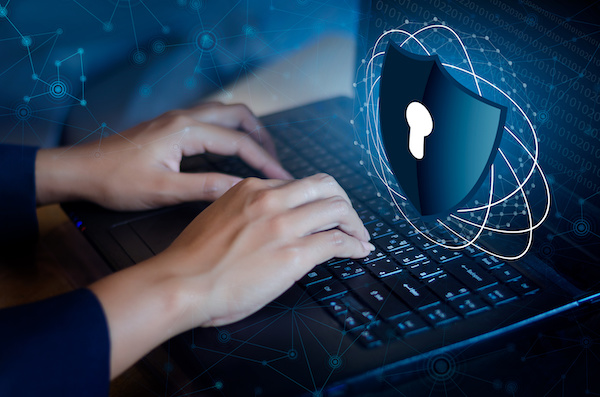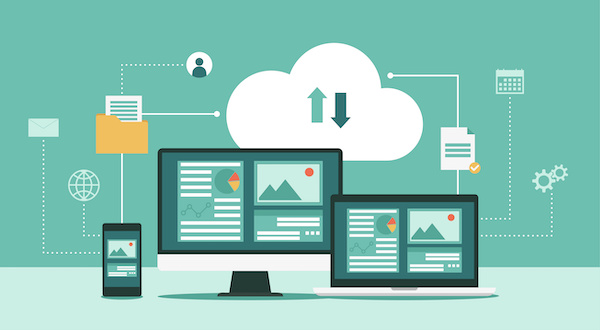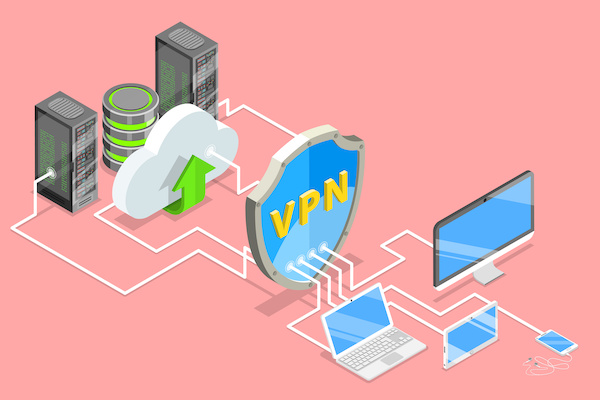Easily and Inexpensively Implement a Secure Remote Access Environment

We hear the terms “remote work,” “telework,” and “working from home” almost daily. Since 2020, due to the impact of the COVID-19 virus, the number of companies adopting telework has been steadily increasing. As the workplace shifts from the office to home, understanding remote access environment setup and security measures has become crucial.
This document explains remote access security measures for companies considering introducing telework or those rethinking their operational methods.
Table of Contents
- What is Remote Access?
- The Necessity of Security Measures in Remote Access
- Risks Hidden in Remote Access
- Risk of Communication Data Being Eavesdropped
- Risk of Data Being Tampered With
- Risk of Impersonation Attacks
- Risk of Virus Infection
- “RAS” and “VPN” for Building a Remote Access Environment
- Security Tools That Can Be Easily Implemented and Operated Even Without a System Administrator
1. What is Remote Access?
Remote access refers to accessing a company’s computer from outside the company network. You can work from anywhere, whether you’re away on business or working from home, by connecting to your PC or business systems located within the company. The ability to work from anywhere has expanded “work style diversification.”
With the government promoting “work style reform” and the diversification of workers’ values and lifestyles progressing, remote work will likely become more ingrained in Japanese society even “after COVID-19.” For small and medium-sized business owners, promoting the rationalization of work styles and establishing the environment for this is an important challenge.
2. The Necessity of Security Measures in Remote Access
Remote access is becoming increasingly common in our lives, but its convenience comes with various hidden risks.
2-1. Risks Hidden in Remote Access
If the security environment is inadequate, an employee’s “login information” such as their ID and password, can be obtained, which can lead to intrusion into the company’s systems. IDs are often set as email addresses, and easily guessed passwords increase the likelihood of unauthorized access. Furthermore, the risk of intrusion through an employee’s PC that is being used for remote access from home is also significant.
2-1. Risk of Communication Data Being Eavesdropped
When connecting to a company’s computer via remote access, there is a risk of communication content being eavesdropped. This is because monitoring software can be installed on the network to obtain communication data. As mentioned later, building an “encrypted” communication environment is essential.
2-2. Risk of Data Being Tampered With
If a company’s server is compromised, business data may be tampered with. In some serious cases, information on the company’s public website may be altered.
2-3. Risk of Impersonation Attacks
Impersonation attacks are a risk that arises when an employee’s login information is illegally obtained. To prevent impersonation attacks, it is effective to use login information monitoring tools. Also, regularly changing user passwords is an important measure.
2-4. Risk of Virus Infection
There are many cases of computer viruses invading and destroying company data. If infected with a virus, the company’s business operations may be suspended for a certain period of time in the worst-case scenario. In many cases, even if the company’s security measures are perfect, there are often deficiencies in the security of “employees’ home PCs used for working from home.” The most important thing to focus on in a remote work environment is improving the security of external environments.
3. “RAS” and “VPN” for Building a Remote Access Environment
There are two methods for building a remote access environment: “RAS” and “VPN.”
Remote Access Environment Using **RAS (Remote Access Service)**

RAS (Remote Access Service) is a mechanism for connecting to a remote computer network. RAS is used to build a general remote access environment. This method involves accessing RAS from home or other locations via an internet connection and connecting to the company network or office PC. However, since general RAS uses a regular internet connection, there is a risk of confidential company information being intercepted if security measures are not implemented. Therefore, it is essential to choose a service that provides security measures.
Remote Access Environment Using **VPN (Virtual Private Network)**

VPN (Virtual Private Network) is a mechanism that creates a virtual private line on the internet, ensuring a secure route for exchanging information. Security can be enhanced by building a VPN, even when using the RAS method. VPN connections allow you to set up “tunneling,” “encryption,” and “authorization,” enabling secure data exchange. Here’s a brief explanation of the meaning and mechanism of each:
・Tunneling
A virtual tunnel is created between the data sender and receiver to enable communication.
・Encryption
Data is “locked” to prevent communication data from being eavesdropped or tampered with.
・Authorization
A method to verify that the sender and receiver are the correct parties.
Since VPN connections have such mechanisms, security is enhanced, making communication relatively safe.
4. Security Tools That Can Be Easily Implemented and Operated Even Without a System Administrator
With the realization of diverse work styles, the need for security measures for companies’ network environments and PCs assigned to employees is increasing. Cyberattacks that endanger management are not limited to large corporations but also affect small and medium-sized enterprises.
Many business owners seem to worry that building a security environment takes “time” and “cost” and requires a highly IT-literate person. But don’t worry!
Even small and medium-sized businesses without a system administrator can easily implement and operate『 **EXOSecurity** 』.
『EXO Security』uses cloud-based centralized management to maintain the latest security status against new threats. Also, it allows administrators to “intuitively manage” the security functions and security scores enabled for each employee on the screen in the cloud. Administrators can check and manage the security status of PCs within the company, as well as installation status. No knowledge or experience of systems is required to introduce and operate 『EXO Security』.
Leave remote access security to **『EXOSecurity』**.
For inquiries, please contact globalsupport@jiran.com